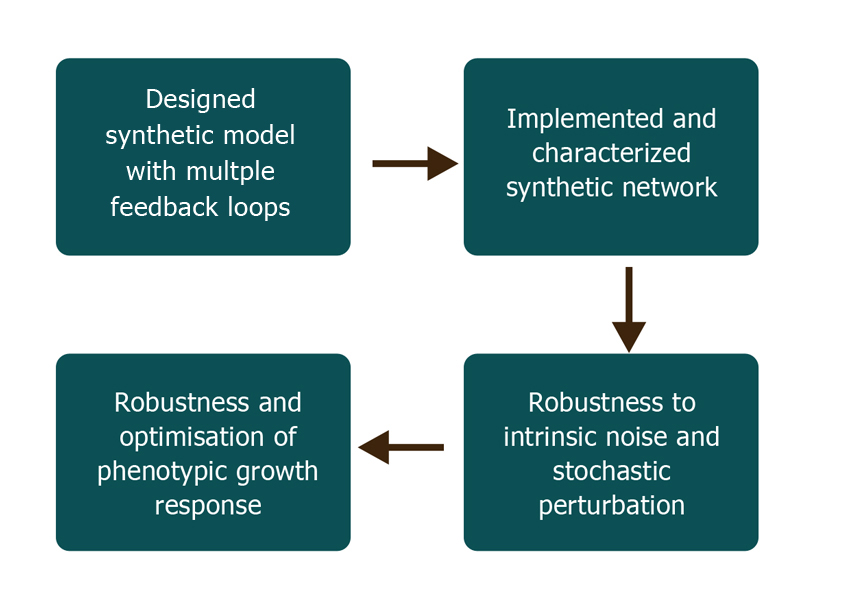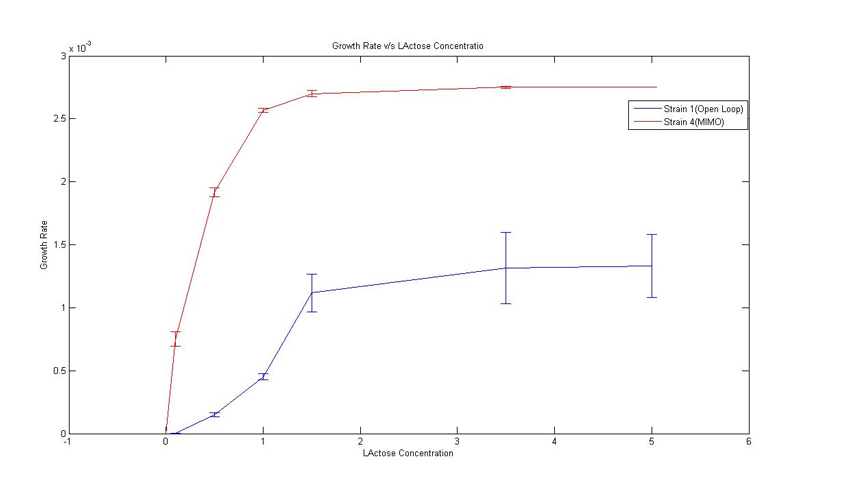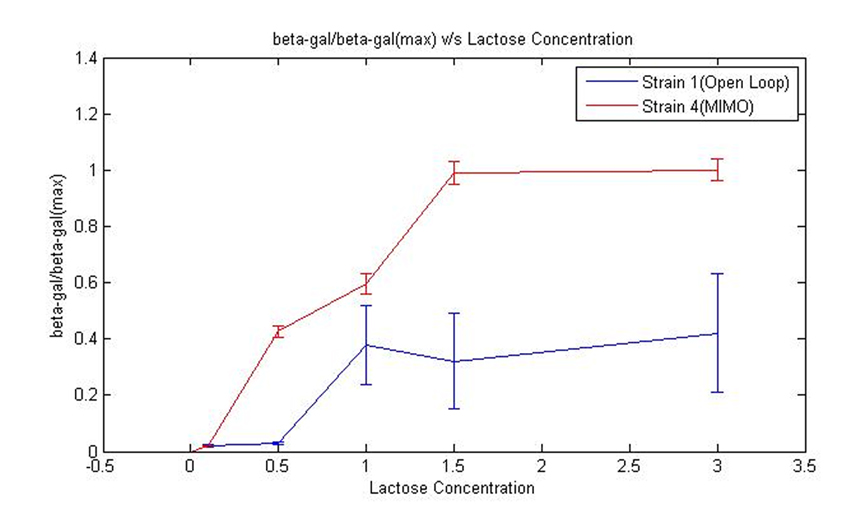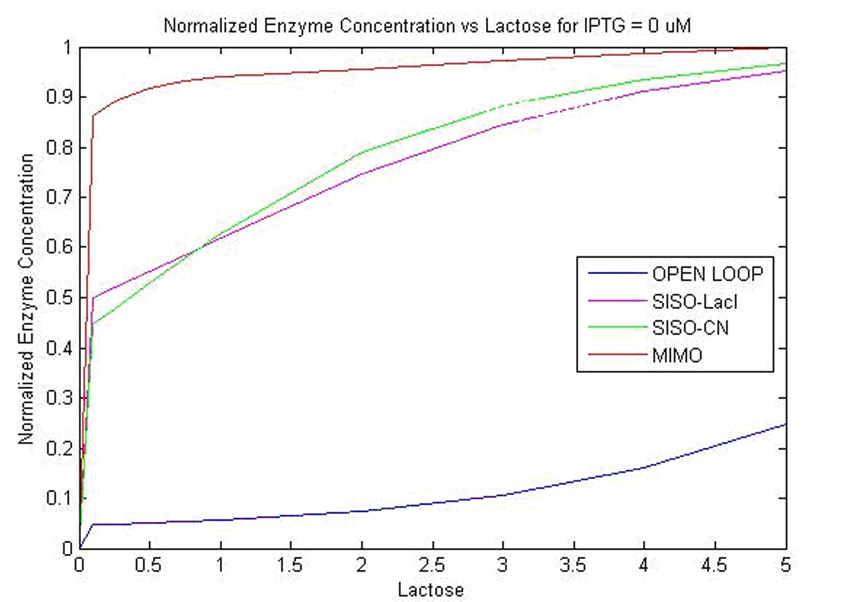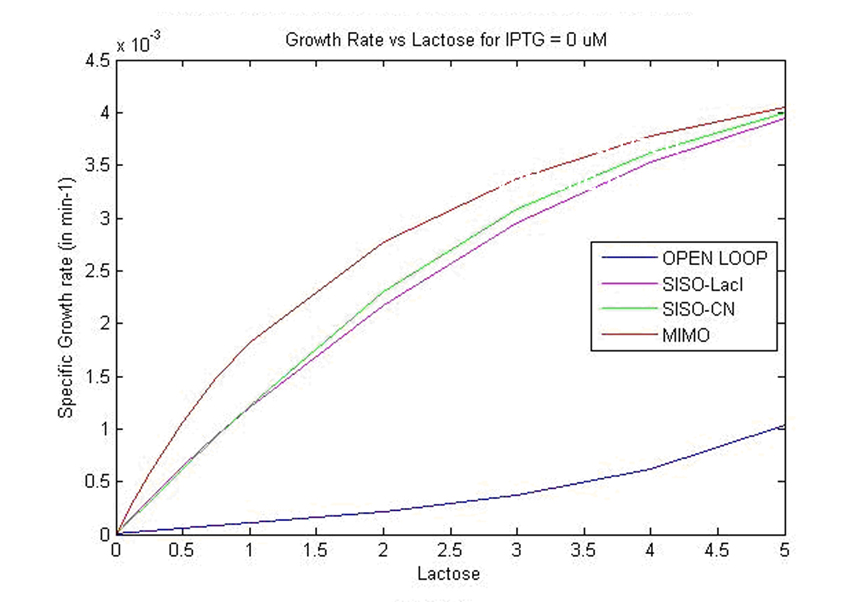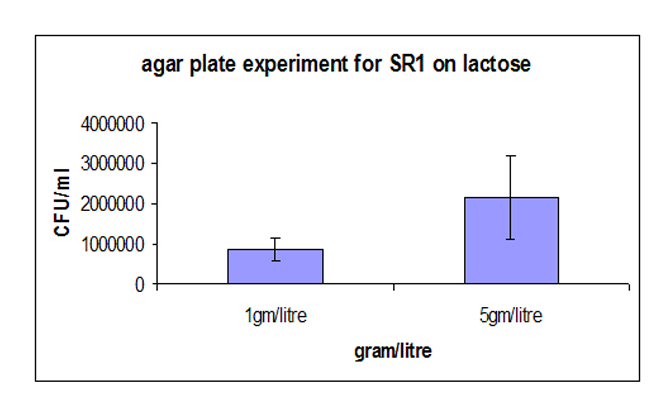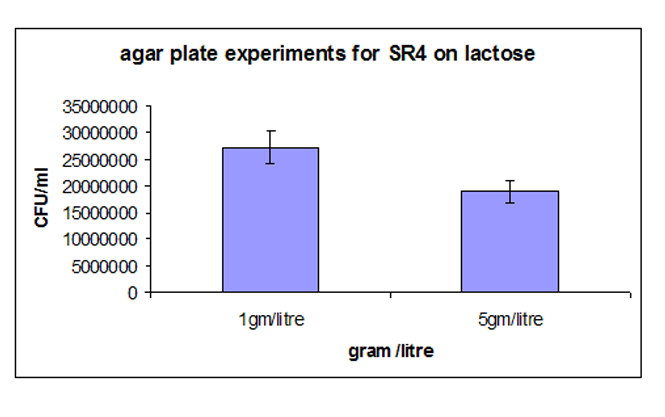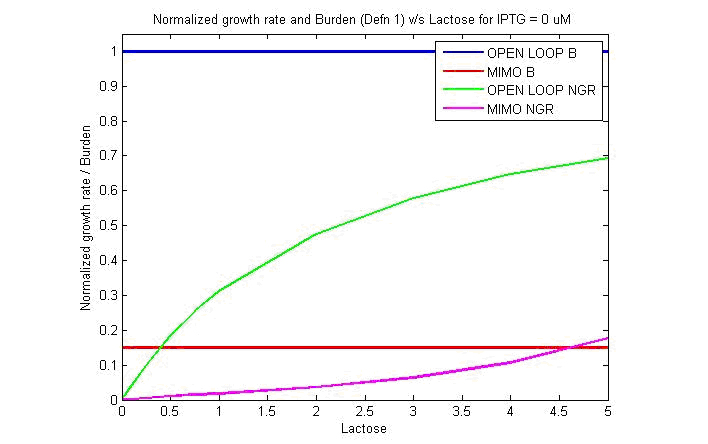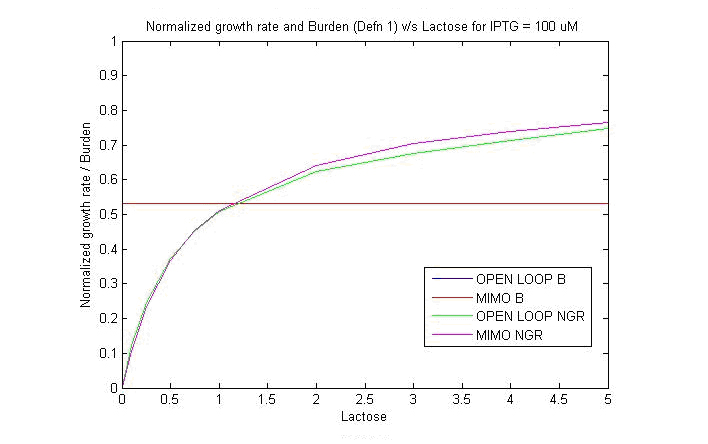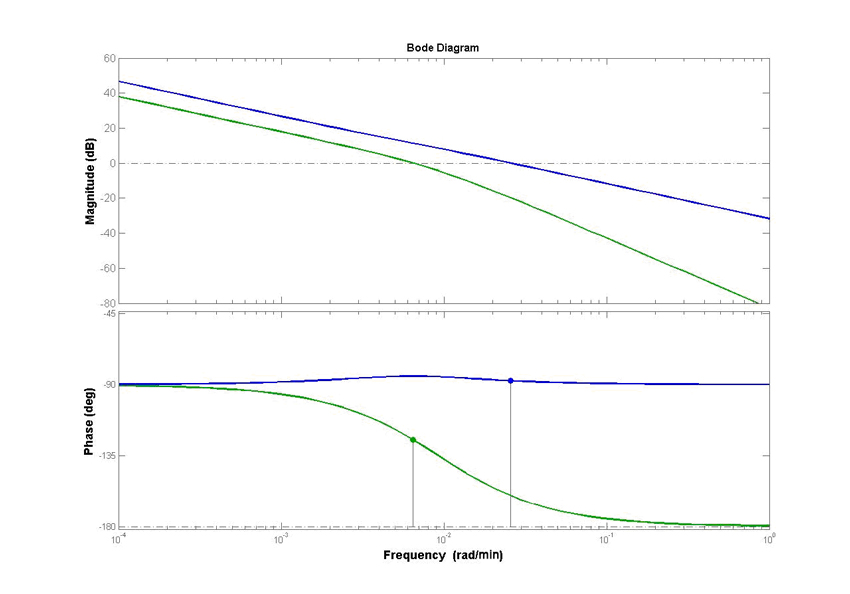Team:IIT Bombay India/Project
From 2009.igem.org
(Difference between revisions)
Pranayiitb (Talk | contribs) |
Manishshetty (Talk | contribs) (→Analysis of multiple feed-backs in biological systems) |
||
| Line 61: | Line 61: | ||
| - | ''Experimental'' | + | '''''Experimental''''' |
| Line 67: | Line 67: | ||
| - | ''Simulation'' | + | '''Simulation''' |
| Line 75: | Line 75: | ||
'''Results''' | '''Results''' | ||
| - | ''Experimental results'' | + | '''Experimental results''' |
| - | 1. Steady state value of YFP v/s IPTG: For Strain1 and 2, increase in IPTG, does not affect the YFP. For Strain 3 and 4, increase in IPTG increases YFP expressions. Here experimental results do not correlate with simulation results as strain 3 lies above strain 4. | + | 1. '''Steady state value of YFP v/s IPTG:''' |
| + | For Strain1 and 2, increase in IPTG, does not affect the YFP. For Strain 3 and 4, increase in IPTG increases YFP expressions. Here experimental results do not correlate with simulation results as strain 3 lies above strain 4. | ||
[[Image:final8.jpg]] | [[Image:final8.jpg]] | ||
| - | + | ''' | |
| - | 2. Growth on Lactose for Strain 1 and 4: We obtained specific growth rate and normalized beta-gal expression on lactose. In strain 4, we observe that standard deviation is less as compared to strain 1. We also have a comparison of the results obtained from simulation. | + | 2. Growth on Lactose for Strain 1 and 4:''' |
| + | We obtained specific growth rate and normalized beta-gal expression on lactose. In strain 4, we observe that standard deviation is less as compared to strain 1. We also have a comparison of the results obtained from simulation. | ||
[[Image:final6.jpg]] | [[Image:final6.jpg]] | ||
| Line 95: | Line 97: | ||
| - | 3. Agar plate experiment: Strain-4 demonstrated higher colony forming unit as compared to strain-1. The increase was about 40%. The interesting fact was that the deviation observed in Strain-4 was less compared to that of Strain-1, reiterating the fact that the noise at the protein level was translated to the phenotypic level. | + | 3. '''Agar plate experiment:''' |
| + | Strain-4 demonstrated higher colony forming unit as compared to strain-1. The increase was about 40%. The interesting fact was that the deviation observed in Strain-4 was less compared to that of Strain-1, reiterating the fact that the noise at the protein level was translated to the phenotypic level. | ||
[[Image:final4.jpg]] | [[Image:final4.jpg]] | ||
| Line 101: | Line 104: | ||
[[Image:final5.jpg]] | [[Image:final5.jpg]] | ||
| - | + | ''' | |
''Simulations'' | ''Simulations'' | ||
| + | ''' | ||
| - | + | 1. '''Detailed Deterministic models''': | |
| - | 1. Detailed Deterministic models: A model was developed to accurately quantify the dynamic behavior of the all the strains. The specific growth on lactose, was able to correlate with the experimental data as shown above. Also a concept of burden was introduced and it was shown that strain 4 has optimized its protein concentration for maximizing growth. | + | A model was developed to accurately quantify the dynamic behavior of the all the strains. The specific growth on lactose, was able to correlate with the experimental data as shown above. Also a concept of burden was introduced and it was shown that strain 4 has optimized its protein concentration for maximizing growth. |
| Line 114: | Line 118: | ||
| - | 2. Stochastic modeling | + | 2. '''Stochastic modeling''' |
A phenomenological model was developed for expression of LacI and replication of copy number and stochasticity was introduced in the system using Langevin approach. The main aim of this exercise was to characterize the inherent noise present in the system, which was shown to greatly reduce for strain-4 as compared to strain-1. In the diagram shown the error bars at the end show how the noise varies dynamically in all the 4 strains. | A phenomenological model was developed for expression of LacI and replication of copy number and stochasticity was introduced in the system using Langevin approach. The main aim of this exercise was to characterize the inherent noise present in the system, which was shown to greatly reduce for strain-4 as compared to strain-1. In the diagram shown the error bars at the end show how the noise varies dynamically in all the 4 strains. | ||
| Line 121: | Line 125: | ||
[[Image:Graph-2.jpg]] | [[Image:Graph-2.jpg]] | ||
| - | 3. Control theory approach | + | 3. '''Control theory approach''' |
We have done frequency response analysis on the linear system using magnitude and phase Bode plots. | We have done frequency response analysis on the linear system using magnitude and phase Bode plots. | ||
| Line 153: | Line 157: | ||
| - | 1. Experimental analysis of CFP: Due to unavailability of cyan laser filter for FACs we were unable to do CFP expressions. By December 2009, we aim to generate CFP expression profiles for the four strains. | + | 1. '''Experimental analysis of CFP:''' |
| + | Due to unavailability of cyan laser filter for FACs we were unable to do CFP expressions. By December 2009, we aim to generate CFP expression profiles for the four strains. | ||
2. More experimentation for different values of lactose and IPTG, to get more data for beta-gal expressions and growth rate for all 4 strains | 2. More experimentation for different values of lactose and IPTG, to get more data for beta-gal expressions and growth rate for all 4 strains | ||
| - | 3. Detailed model: Accurately finding the kinetic constants from literature and utilizing them to accurately correlate with the experimental results; | + | 3. '''Detailed model:''' |
| + | Accurately finding the kinetic constants from literature and utilizing them to accurately correlate with the experimental results; | ||
| - | 4. Stochastic Analysis:- To develop a simplified model for growth and to introduce stochasticity in the same and characterize the inherent noise in the system. | + | 4.''' Stochastic Analysis''':- |
| + | To develop a simplified model for growth and to introduce stochasticity in the same and characterize the inherent noise in the system. | ||
| - | 5. Control analysis: We have done the analysis for only one kind of feedback system. We could use different feedback | + | 5. '''Control analysis:''' |
| + | We have done the analysis for only one kind of feedback system. We could use different feedback | ||
systems characterized by different Hill-Coefficients and try to do further analysis on the same lines as the analysis done here. | systems characterized by different Hill-Coefficients and try to do further analysis on the same lines as the analysis done here. | ||
Revision as of 02:29, 22 October 2009
| Home | The Team | The Project | Analysis | Modeling | Notebook | Safety |
|---|
Analysis of multiple feed-backs in biological systems |
 "
"

